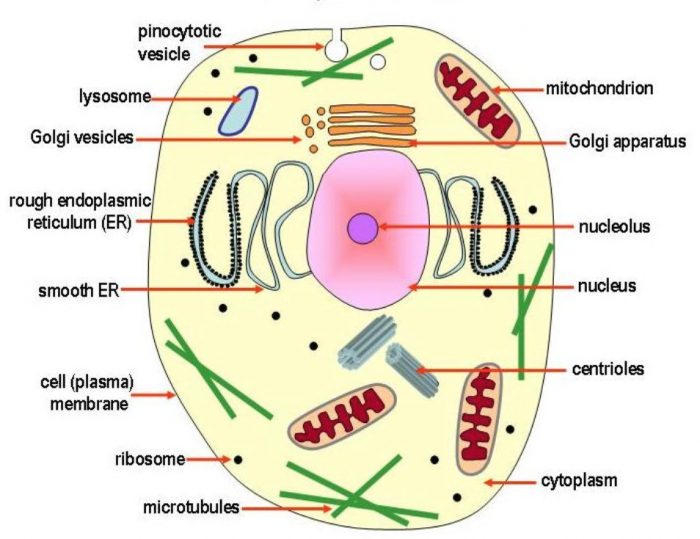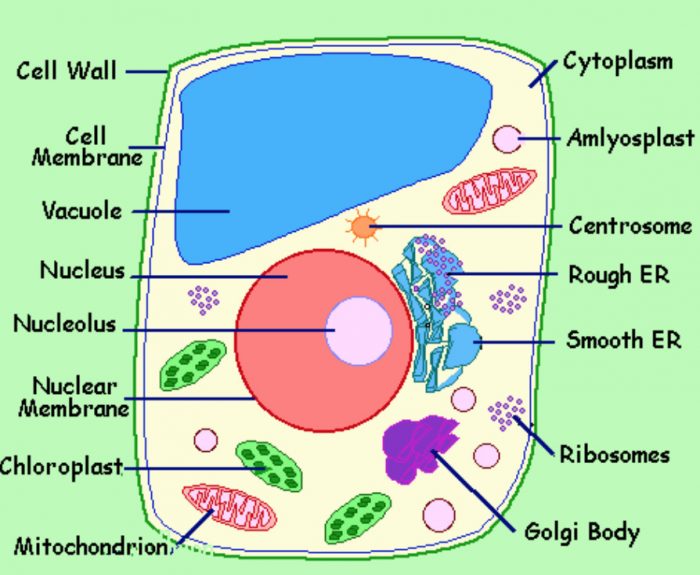Question 1 Describe how nutrients are replenished in the soil?
Question 2 How is the growing of a leguminous crop in the fields beneficial to the framer?
Question 3 How nutrients are replenished in the Soil by adding Fertilisers and manures?
Question 4 What is the function of cytoplasm?
Question 5 What is function of mitochondria?
Question 6 What are vacuoles?
Question 7 Name any two parts of plant which are present in plant cells but not in animal cells?
☛ Also Read NCERT Solutions for Chapter 1 Nutrition In Plants
Contents
How Nutrients are replenished in the Soil
The plant nutrients like nitrogen, phosphorus and potassium are present in the soil naturally. When the plants are grown, they absorb the nutrients from the soil due to which the amount of plant nutrients in the soil goes on decreasing. And when the crop plants are grown in the same fields again and again, then the soil becomes deficient in plant nutrients like nitrogen, phosphorus and potassium. Due to this, the plant nutrients (or minerals) are replenished in the soil in the following two ways:
(1) Nutrients are replenished in the Soil by adding Fertilisers and manures
When fertilisers and manures are added to the soil in the fields, then the soil gets enriched with nutrients like nitrogen, phosphorus and potassium, etc. The crop plants can then grow well in this soil. Fertilisers and manures provide essential nutrients for the growth of plants so that we get healthy plants. The two most common fertilisers which are used to provide plant nutrients (or minerals) in the fields are NPK and Urea.
NPK fertiliser provides Nitrogen (N), Phosphorus (P) and Potassium (K) to the soil in the fields whereas urea provides only nitrogen.
The crop plants grown in the fields require nitrogen in maximum amount to make the proteins.
(2) Nitrogen Can be Replenished in the Soil by Growing Leguminous Crops
A lot of nitrogen gas is present in the air but the plants cannot use nitrogen in gaseous form.
The plants need nitrogen in the form of water soluble compounds (such as nitrates). The plants such as gram (chana), peas, pulses (moong, etc.) and beans are called leguminous plants (or legumes). The leguminous plants have root nodules in them which contain Rhizobium bacteria . Rhizobium bacteria can convert nitrogen gas of air into nitrogen compounds (like nitrates). When a leguminous crop is grown in a field, the Rhizobium bacteria present in the root nodules of leguminous plants convert nitrogen gas of air into
nitrogen compounds (like nitrates). Some of these nitrogen compounds are used by the leguminous plants for their own growth. The remaining nitrogen compounds made by Rhizobium bacteria mix with the soil in the field and enrich it. Thus, the soil in the fields gets enriched with nitrogen compounds in the natural way.
Cells
A cell is the smallest unit of life. All the living things (plants and animals) are made from cells.The bodies of living organisms are made of tiny units called cells. Thus, cells are the building blacks of plants and animals. Cells are very, very small in size which cannot be seen with naked eyes. Cells can be seen only under a microscope.
Some organisms are made of only one cell but others are made of many many cells joined together.
For example: The simplest animal called Amoeba is made up of only one cell but a complex organism like rose plant or a man is made up of millions of cells.
The cells are mainly of two types : Animal cells and Plant cells.
Animal Cell
Plant Cell
A cell consists of a jelly-like material ençlosed in a thin membrane . The jelly like material which fills the cell is called cytoplasm.
The thin outer covering of the cell is called cell membrane.
There is a large spherical structure floating in the centre of a cell which is called the nucleus.The nucleus is surrounded by jelly-like material called called cytoplasm.
A number of small bodies called mitochondria are also present in the cell. There are tiny air spaces in the cytoplasm of an animal cell which are called vacuoles.
Functions of all the Parts of a Cell
(1) The cell membrane protects the cell and also controls the passage of materials which go into the cell or go out from the cell.
(2) The function of nucleus is to control all the activities of the cell.
(3) The function of mitochondria is to carry out respiration for releasing energy from food.
(4) The function of small vacuoles is to hold air, water or particles of food.
(5) The function of cytoplasm is to carry out all the activities of life processes (or metabolism)
Plant cells have three more parts in them. These are cell wall, chloroplasts and large vacuoles. All the plant cells have a thick cell wall around the cell membrane. The cell wall protects the cell, gives it a fixed shape and makes it rigid (strong).The chloroplast contain
chlorophyll and make food in green plants by the process of photosynthesis. The large vacuoles in plant cells are filled with cell sap.
| Notes for Chapter 1 Nutrition In Plants |


Thank u very much Ma’am
hi thank you for amazing post